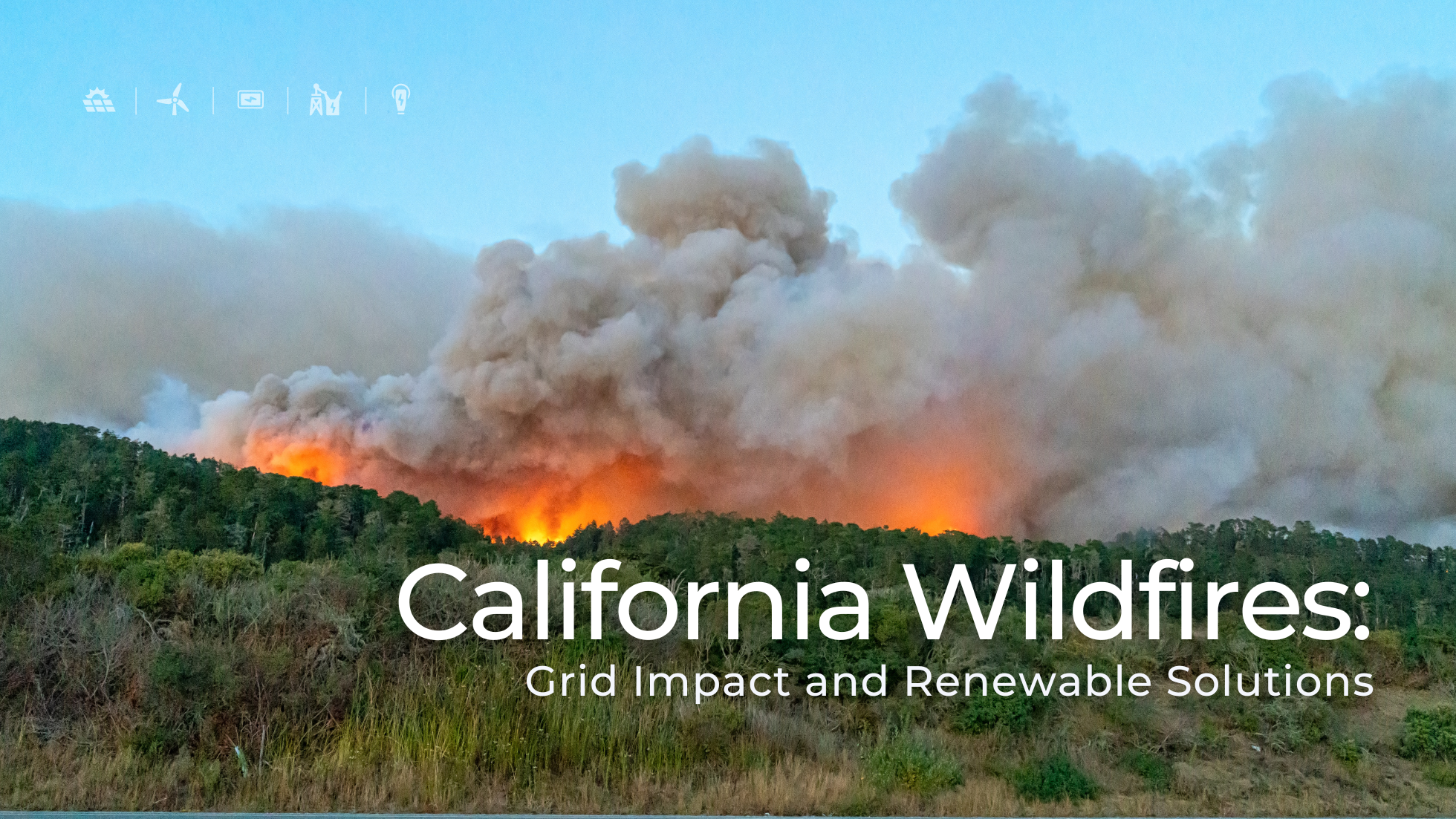Constructing Data Centers that Power Artificial Intelligence (AI) Learn More
California Wildfires: Impact on the Grid and Role of Renewable Energy

The large-scale wildfires in California over the past several years have not only caused significant destruction. They have also raised concerns about the state’s electric grid, which currently relies on highly centralized sources of power generation and the unidirectional flow of power from a few very large generating stations.
Due to their massive size and the potential for harmful emissions (in the case of fossil fuel-based generator plants), many of these generation stations are located in remote areas, far from consumers. This means the grid’s operation has to depend largely on transmission infrastructure to move the power. This transmission infrastructure can be compromised due to its age or exposure to an extreme hazard like high heat or wildfires. (At least five of the 20 most destructive California wildfires, including the massively destructive Camp Fire in 2018, were attributed to power line problems.)
Addressing the challenges
- The adoption of distributed renewable energy generation and storage could help mitigate these hazards and exposure. Not only does renewable energy generation slow down the rate of climate change and help reduce the likelihood of severe wildfire in the future, it provides some capacity to continue making power available to consumers in the event of a transmission infrastructure failure (think solar installations on homes, for example).
- Extensive modernization upgrades will help support higher levels of distributed energy resource penetration and enable bi-directional power flows.
- An international team led by Lawrence Berkeley National Laboratory set out to prove that solar storage microgrids are an excellent long-term solution for power storage and distribution. They conducted a study modeling clean energy microgrids at seven California communities that are vulnerable to wildfires. The microgrids ran on solar and storage for at least 60% of the year with fossil fuel generators acting as a secondary source. The team focused on households where heating and cooling account for most of the energy use. The results were encouraging: not only do these microgrids reduce demand on the state power grid, they are also more economical: on average, 5 to 10 cents less per kilowatt hour than power from the state’s electrical grid.
“This study, the first detailed look into how clean energy microgrids can minimize outages and the cost of energy, has relevance for the entire nation, not just California,” explains Dominic DiMare, Principal, BEI Construction. “More than 46 million people in 70,000 U.S. communities live in areas at risk of serious wildfires, and this could prove an efficient and cost-effective way to improve wildfire resilience and energy availability long-term.”
“As a leading provider of construction services for renewable energy infrastructure in California, BEI continues to keep abreast of the latest research on the power grid and energy conservation, and will continue to share it with our readers,” adds DiMare.